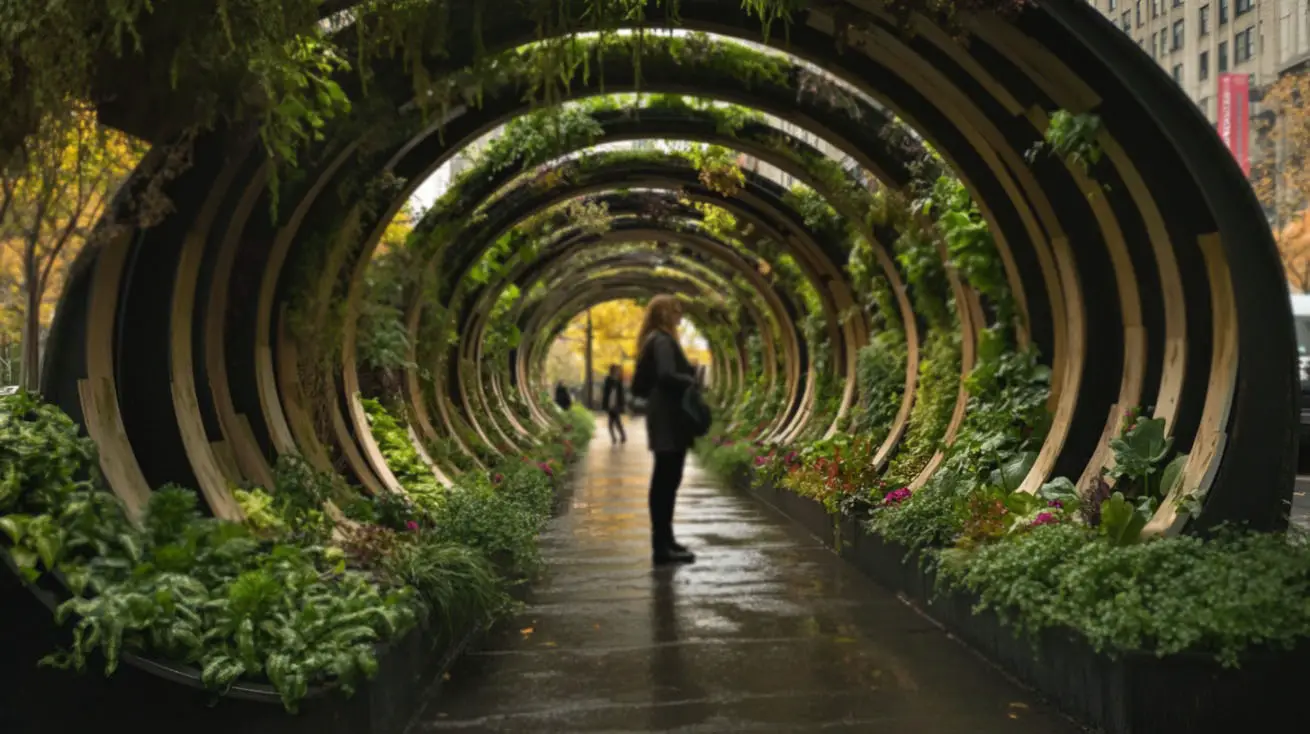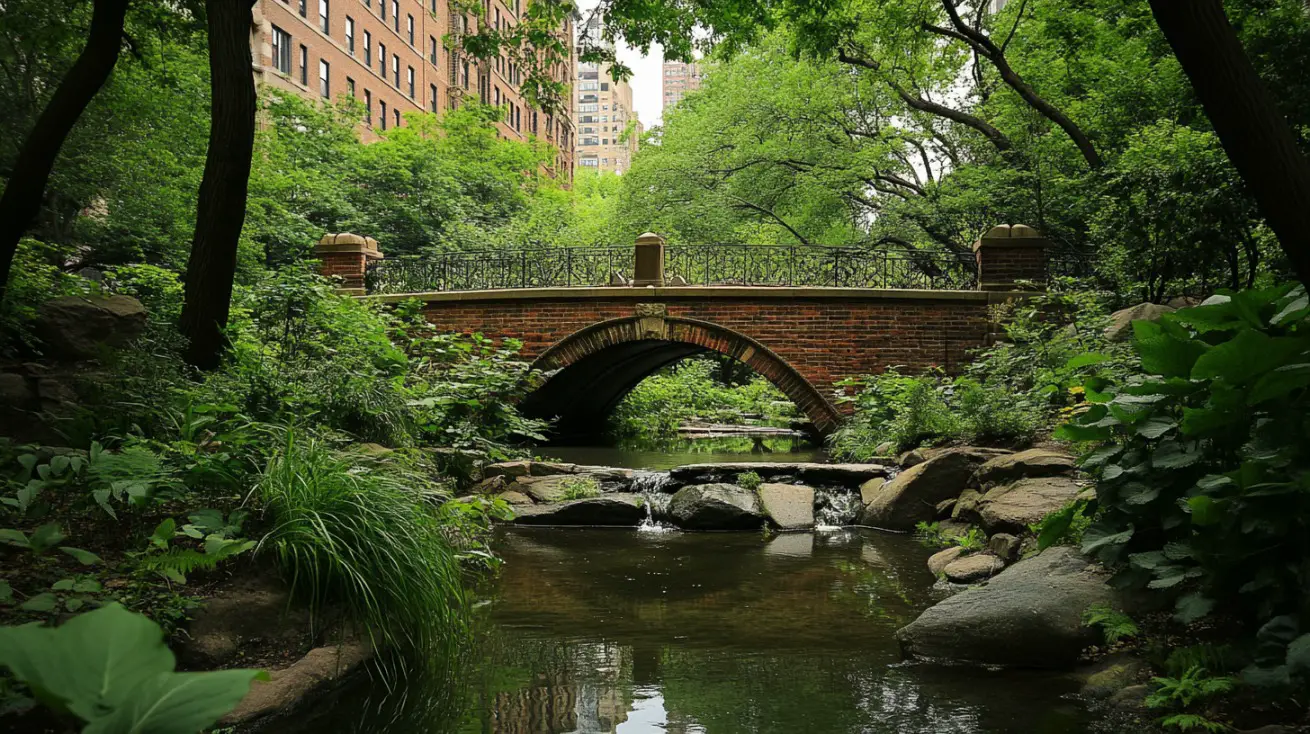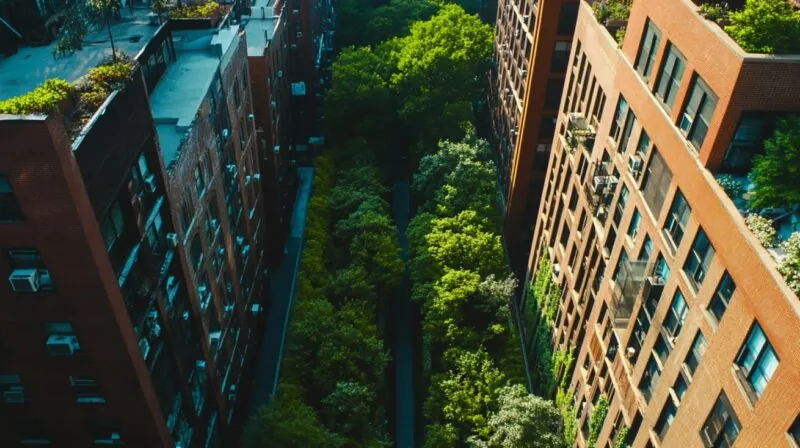New York City dazzles with iconic parks like Central Park and Prospect Park, but behind the brownstone facades and iron gates exists a quieter, more intimate green world.
Hidden gardens, nestled behind residential buildings, escape the public eye but offer pockets of solitude and curated beauty.
Their existence raises questions about access, intention, and the quiet privilege of greenery in a metropolis known for vertical living.
The Legacy of Hidden Gardens
Before Central Park ever graced Manhattan, Jones Wood stretched across 150 acres, dense with trees, brambles, and wild undergrowth.
Urban planners debated transforming that green expanse into the city’s primary park, a decision that could have rewritten Manhattan’s spatial history. Instead, attention shifted west, and Jones Wood slipped into obscurity. What remained, however, evolved into something far more intimate.
Jones Wood Garden is not marked on tourist maps or public signage. Tucked behind a row of stately Upper East Side townhouses, it whispers its presence through wrought-iron gates and ivy-covered brick. A heavy sense of privacy saturates every inch. Those who know, know. Those who don’t, walk past it unaware.
Access comes not through public entrances, but through the backdoors of twelve privileged homes. Within that secluded square lies a carefully cultivated sanctuary. Its layout reflects deliberate design choices—functional, aesthetic, and historical.
- Delicate trellises that stretch across gravel paths, supporting vines that bloom in sync with the seasons.
- European fountains, carefully chosen—before settling on one, homeowners are advised to view all fountain options to match aesthetics with acoustics and climate.
- Seasonal flowerbeds that rotate blooms with intention, offering color through spring, fragrance through summer, and texture through fall.
Every vine and pebble pays homage to a 19th-century ambition: to merge architectural elegance with natural serenity. Green space here wasn’t added as an afterthought—it was embedded into the blueprint. Courtyards like this weren’t simply gardens. They were statements. They told guests that the family behind the walls valued stillness, control, and beauty.
Sound changes upon entry. Sirens and horns vanish, replaced by the low trickle of water and the occasional chirp tucked inside a hedge. What was once wild woodland now speaks the quiet language of wealth—refined, restrained, yet undeniably lush.
Flagstone paths stretch between lounging benches, scattered with petals that fall like confetti during warmer months.
Layered plantings form natural privacy barriers between neighboring plots, turning a shared garden into multiple secluded retreats.
Jones Wood Garden doesn’t scream prestige—it murmurs it. Privacy reigns, not through walls, but through botanical arrangement. A hedge isn’t just greenery—it’s a border of belonging. Entry is not just physical; it’s social, generational, and curated.
What It Takes to Build Green Space in NYC
Creating new green space in New York City feels like solving a riddle with no right answer. Land doesn’t just carry a price—it demands a sacrifice. Square footage means millions, and developers hover, calculators in hand.
Costs balloon at every phase. Construction isn’t just about planting—it’s drainage, walkways, fencing, irrigation, lighting, and security. Then comes maintenance, which means long-term staff, seasonal plant rotations, and emergency repairs when storms topple trees.
Examples from other cities help illustrate just how complex this can get. Los Angeles offers parallels through efforts like the Wishing Tree or San Gabriel River Park. Projects there also contend with dense zoning, tight budgets, and community demands.
Community and Policy
Money might break ground, but people breathe life into green space. Communities that refuse to give up are often responsible for the parks that do exist.
- Gather signatures
- Attend hearings
- Host pop-up cleanups
Schoolteachers lobby for gardens on asphalt lots. Retirees plant tulip bulbs in trash-strewn corners. Artists paint signs. Musicians raise funds. Residents dream—and then they do.
Neighborhoods find momentum through need. An empty lot where kids can’t play becomes a cause. Rooftops shaded in tar are reimagined as food gardens.
Chain-link fences fall away to make space for compost bins and bee boxes. When the city says no, residents push back with plans, shovels, and relentless hope.
Mapping the Hidden Sanctuaries

Tucked behind buildings, under bridges, or within old church grounds, green sanctuaries often go unnoticed. These spaces do not broadcast themselves.
They require a slower pace, a curious eye, or simply a willingness to turn down a side street without knowing what waits. Some are fully public; others exist in that quiet space between public and private.
All offer visual and sensory relief in an otherwise demanding city grid.
Curated Corners and Quiet Retreats
Not all sanctuaries demand a key or deed. Some invite gentle discovery, tucked into neighborhoods or peeking through ivy-covered gates.
6BC Botanical Garden – East Village
View this post on Instagram
A slice of paradise in Alphabet City, maintained lovingly by volunteers and open to those seeking stillness or inspiration.
- Koi-filled fishponds reflecting sky and leaf
- Vine-draped pergolas offering dappled shade
- Picnic tables often occupied by poets, painters, or dreamers
- Butterflies and bees float gently between seasonal blooms
Garden at St. Luke in the Fields – West Village
Concealed behind a historic church, this garden invites solitude with layered textures and natural song.
- Over 100 bird species either nest or pass through
- Rosebushes, wildflowers, and ornamental trees thrive behind brick enclosures
- Benches placed under thick canopy for midday retreat
- Wind chimes and quiet footsteps replace city noise
Tudor City Greens – Midtown Manhattan
View this post on Instagram
Sitting just above the street, hidden in plain sight, this garden elevates more than just its physical position.
- Two parks separated by 42nd Street and connected through footbridges
- Lilac hedges and trimmed boxwoods create symmetry and softness
- Maintained by local residents under the Tudor City Association
- Frequented by office workers, dog walkers, and residents seeking reprieve
Bruce’s Garden – Inwood
What began as rubble was transformed into floral rebellion—a space where community roots run as deep as the plants themselves.
- Community-run, named in honor of Bruce Reynolds, an NYPD officer and 9/11 first responder
- Irises, tulips, daisies, and flowering shrubs offer color across seasons
- Garden serves as both a memorial and a living classroom
- Volunteers host seasonal events and art exhibits
Uncommon Green Infrastructure
Some green sanctuaries serve dual purposes—beauty mixed with ecological function. Infrastructure in these cases reflects intention and forward-thinking environmental design.
Gil Hodges Community Garden – Gowanus
Not just a garden, but a living model of sustainability in a once-industrial neighborhood.
- Rain gardens collect and purify stormwater
- Fragrance walkways planted with aromatic herbs and blooms
- Native species prioritized to attract pollinators and manage soil health
- Art installations and educational signage built into the landscape
Snug Harbor’s Chinese Scholar’s Garden – Staten Island
View this post on Instagram
Modeled after Ming Dynasty aesthetics, this enclosed space offers deliberate contrast to the chaos of the outer boroughs.
- Bamboo groves rustle with every passing breeze
- Koi ponds ripple under stone walkways and curved bridges
- Intricate moon gates and lattice windows frame each viewpoint
Water features carved into natural rock shapes shimmer with meditative grace, view all fountain options to appreciate the variety and elegance they can bring to tight urban quarters
The Appeal of Hidden Green Spaces

Dense cities leave little space for stillness. These tucked-away gardens function as antidotes. Just a few minutes under a shady arbor can ease cortisol spikes. Birdsong muffles street noise. Water features soothe overstimulated senses.
Urban planners note the importance of micro-greenspaces. They bring measurable benefits: cleaner air, reduced heat, improved mood. For residents in aging walk-ups or bustling neighborhoods, access to quiet flora—no matter how limited—feels like salvation.
The Allure of Exclusivity
Not all green views are equal. A glimpse of a garden through French doors while sipping morning coffee carries its own weight. These spaces are not just for use but for viewing. A curated backyard can transform a property’s emotional and financial worth.
Some of the most sought-after residences include these hidden views. The square footage may be modest, but the ambiance sells. Real estate listings reference “garden exposure” with pride. Exclusive access to green space sends property values climbing, sometimes irrationally so.
Privacy sells. Silence in a noisy city becomes its own currency. In a world of scarcity, one tree in the right place matters more than dozens in the distance.
The Bottom Line
Every garden behind a townhouse gate or tucked in a forgotten alley asks for respect. Responsible discovery means leaving no trace, asking permission, and treating green sanctuaries as shared treasures—even if access remains limited.
Support for community-based gardens ensures more residents and tourists can experience this quiet magic on their family trips. Advocacy, donations, and volunteerism can help seed new sanctuaries across the boroughs.


